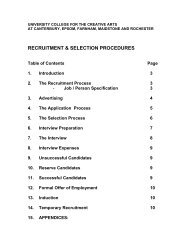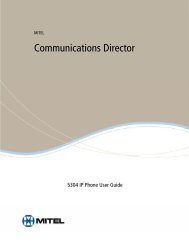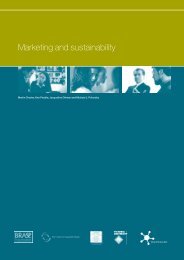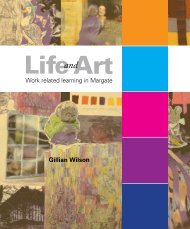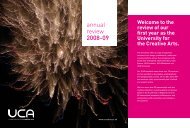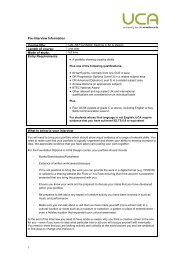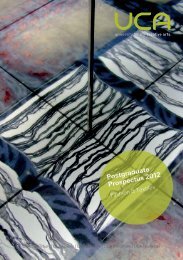John Hinchcliffe
John Hinchcliffe
John Hinchcliffe
- No tags were found...
Create successful ePaper yourself
Turn your PDF publications into a flip-book with our unique Google optimized e-Paper software.
Dorset and FranceThe first Dorset studio 1981 to 1986Charlton Cottage, Charlton MarshallBy 1980, <strong>Hinchcliffe</strong> was reaching a natural period of closure for his textileoutput. He wanted a new set of challenges, and the chance to develop anew body of work around the notion of the multiple image. He decided thatworking in a production environment would provide the scope to designand make complex and complementary ranges, over the longer term. Anew professional partnership with the artist Wendy Barber galvanised theseambitions.The <strong>Hinchcliffe</strong> and Barber partnership began in earnest in 1981 at aninfluential time for both makers. Barber was trained as a painter (SladeSchool of Art 1963-65), and unusually combined her practice in fine artwith a long-standing interest in tapestry weaving. This interest in textileshad been inspired by an influential meeting with Ann Sutton during Barber’stime at the West Sussex College of Art and Design (Sutton, at the age of 21,was in charge of the woven textile department between 1956 and 1963). 18Barber painted coastal and rural landscapes in oil and watercolour, andmade tapestries featuring landscape and coastal settings. She brought tothe partnership a highly developed creative eye, especially in sensing how aceramic and textile range would look in the domestic arena. Her judgementon the ‘<strong>Hinchcliffe</strong> and Barber look’ was very influential. Barber also broughtformidable skills of organisation and marketing to the partnership, quicklyestablishing a forceful media presence, as well as ensuring that key nationaljournals and magazines promoted the new wares.Barber sensed, too, that she could gain the focus she needed in her ownpractice through collaboration. Their sympathy for each other’s work formedthe strong basis for an enduring partnership which was to lead to a highlysuccessful range of ceramics and textiles especially throughout the 1980s andearly 1990s. <strong>Hinchcliffe</strong> and Barber were both motivated by the desire toexplore new processes, and to move away from the ‘precious’ simplicity of theunique object. Both partners used their training, experience and foresight tothink in multiples.<strong>Hinchcliffe</strong> sensed that the designer-maker could influence a wider audience,rather than the individual collector. He would even take the view that theartist who creates solely unique work is compromising artistic value, notcelebrating it. He remarked that ‘in the seventies...there was either craftstoneware or mass-produced pottery. We became fascinated by small potterieslike the ones at Cortona in Tuscany that were making regional pottery in thetraditional peasant way. It was neither craft-based nor industrial’. 19 This maysound idiosyncratic when spoken by <strong>Hinchcliffe</strong> from the high position ofinternational acclaim for the work he produced in the early 1980s. In fact,this commitment to pragmatic production underpinned more than a decadeof important and prolific creative work.‘Ceramics is to do with surface decoration and shape. There seemed to be adivision between industrial shapes, on the one hand, and ‘art’ pottery on theother. We felt our ideas could bridge that gap.’ 20<strong>Hinchcliffe</strong>’s assertion that a move to the production of ceramics was anatural transition for two makers specialising in woven textiles (albeit witha long standing interest in painting and drawing) has a characteristicallyconfident ring to it. It belies, of course, years of disciplined work and thought.The progression to a craft form where the disciplines of marketing and direct14 J o h n H i n c h c l i f f e J o h n H i n c h c l i f f e 15





